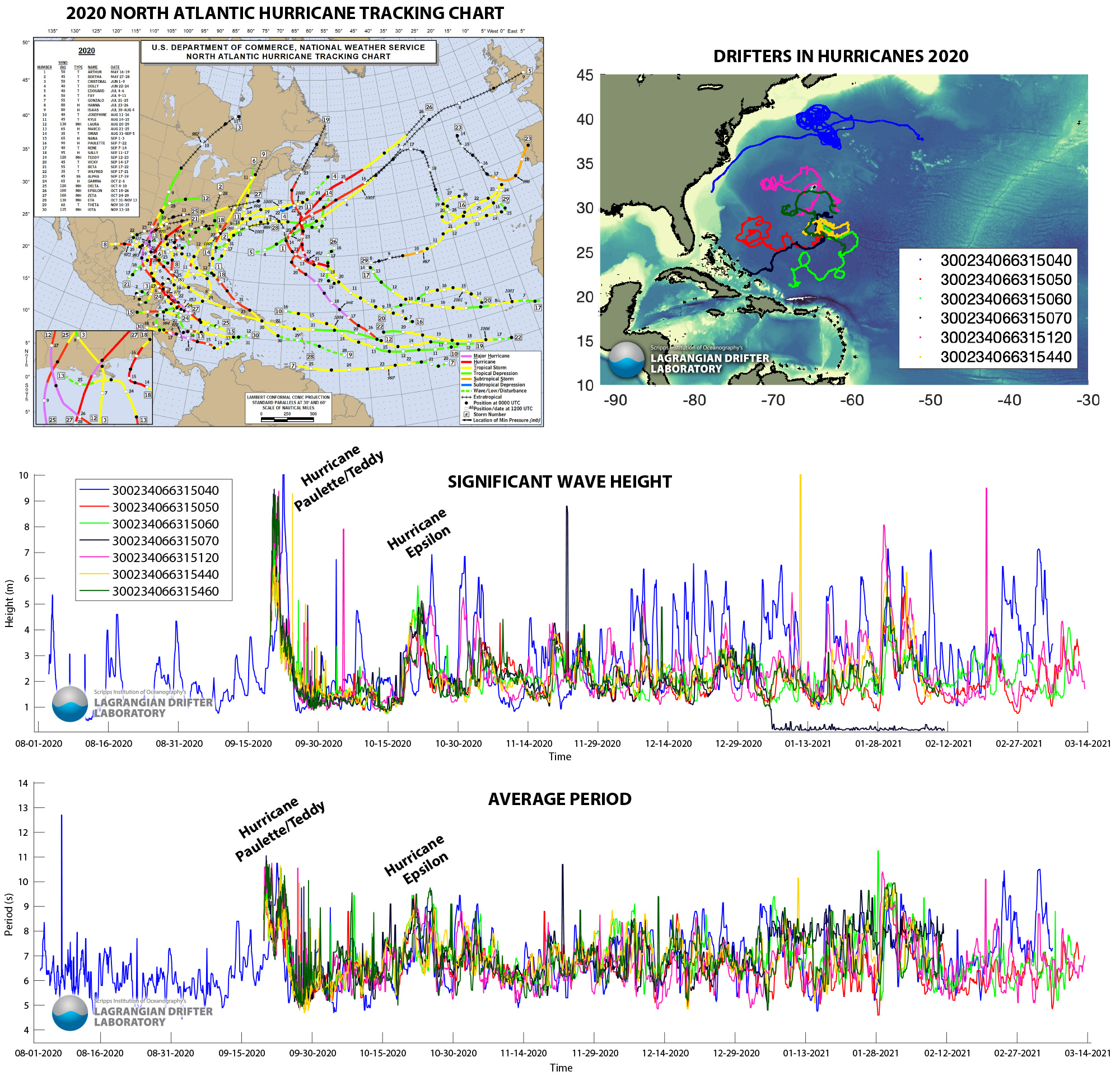
NEWS
Global Drifter Program Wave Drifters Measure the 2020–2021 Hurricane Seasons
During the 2020 hurricane season, the Global Drifter Program (GDP) deployed 10 hurricane drifter packages into the eastern Atlantic Ocean via the Air Force 53rd Weather Reconnaissance Squadron’s C130 flight. The hurricane drifter packages contained Directional Wave Spectra Drifters (DWSDTM) and Directional Wave Spectra Drifters with Barometers (DWSDBTM) that measure simultaneously all the parameters of the wave field, sea surface temperature, and sea level pressure. The packages also contained MiniMet and ADOS drifters that measure wind speed and direction as well as sea surface temperature, temperature up to 150 m below the sea surface, and sea level pressure. This array of wave drifters provided valuable data on the oceanic conditions beneath multiple hurricanes, including Hurricane Teddy and others. They were deployed under Hurricane Isaias in August 2020 and will remain collecting data through 2021.
In the spring of 2021, OceanX helped refurbish the array with an additional six Directional Wave “Bio” drifters. Although the new bio-friendly drifters were deployed to test their hardiness, they also supported data gathering during the 2021 Atlantic Hurricane season. These data provided input to NOAA forecasters’ calculations on hurricane intensity and storm surge as well as to researchers seeking to improve the tools used by these forecasters. Furthermore, one of the “Bio” drifters deployed by OceanX and configured to measure only ocean currents and sea surface temperature was in the path of Hurricane Sam, just a few tens of kilometers from the eye of the cyclone. Given the favorable location of the drifter to measure storm conditions, it was remotely converted to a DWSD (wave buoy) by sending a command via a satellite link. At the time of the encounter, Sam had decayed from a category 4 to a category 2 hurricane, yet significant wave heights up to 4 m (max wave height of 6.7 m) were measured. The ability to change the drifter mission remotely highlights the huge potential of the GDP array and its cost-effectiveness.
At this point in time, there are still six DWSD and DWSDB that just finished monitoring waves in the path of Hurricane Sam; they also provided valuable data on Hurricane Larry’s and Hurricane Odette’s wave fields, which created heavy surf and dangerous rip currents along the East Coast. The tremendous value of having this wave-measuring drifter field in place is that it provided constant data on the evolution of the oceanic conditions and did not stress air assets (to deploy just-in-time measurements). By establishing a continuous wave/barometer array around the United States, the GDP provides continuous support to NOAA weather operations and hurricane and storm surge forecasting.

Figure 1. Summary of 2020 wave observations in hurricane conditions. To improve the clarity of the figure, only data from a subset of drifters is shown. Credit for top left panel: National Hurricane Center.

Figure 2. Summary of 2021 wave observations in hurricane conditions. To improve the clarity of the figure, only data from a subset of drifters are shown. Credit for top left panel: National Hurricane Center.
